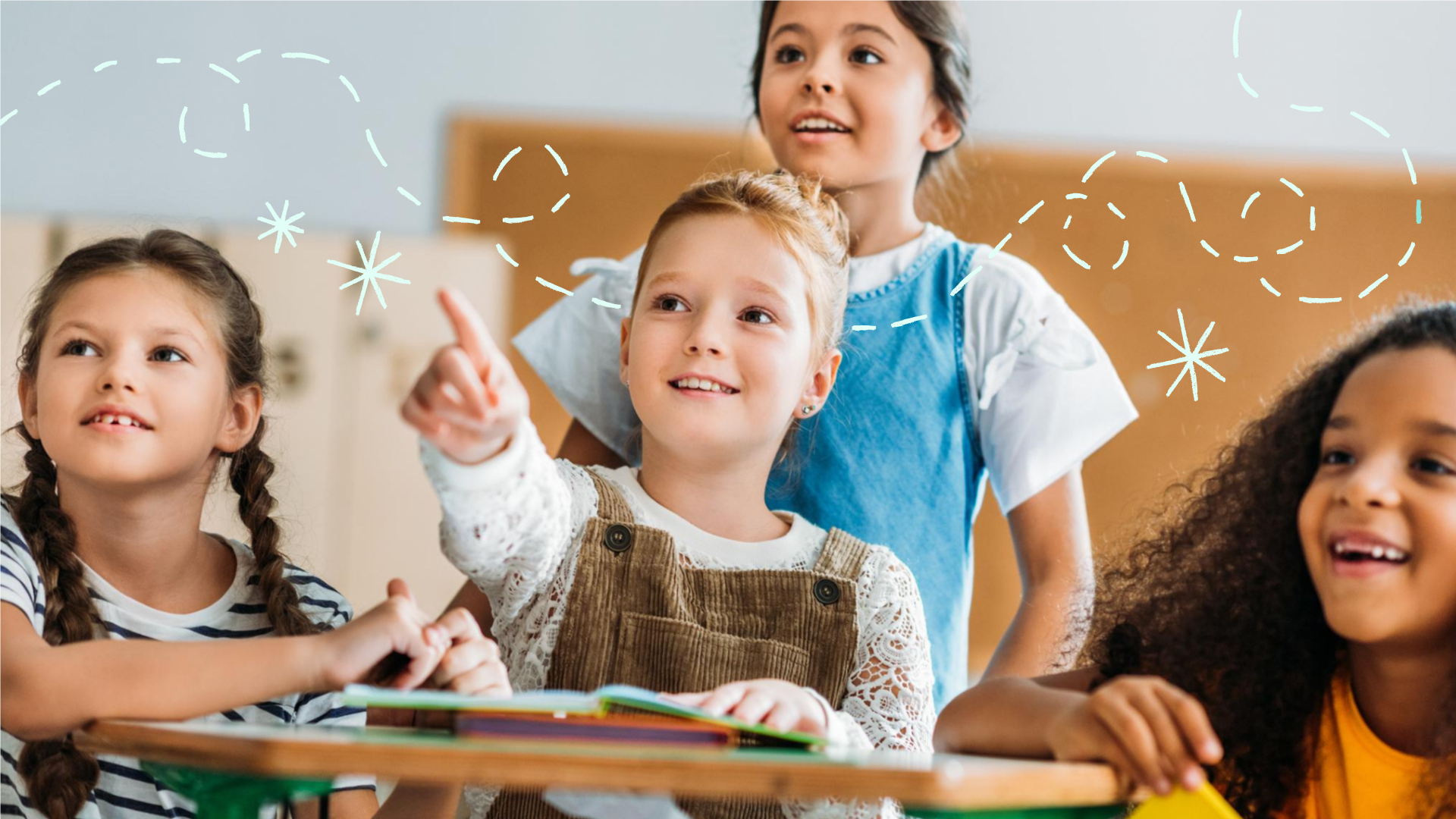
Four Essentials for Integrating SEL and Friendships in the Classroom
When a child makes good friends, there’s a reason to celebrate. Making new friends can lead to rewarding experiences, both in school and out of school. Friendships help children learn important social interaction skills, such as listening, speaking, turn-taking, empathy, and assertiveness. Kid friends can often lead to friendships between parents or guardians, too. Friendship and social connection are important and help enrich our personal lives.
Some conflict between friends is inevitable among kids as well as the adults who care for them. However, friendship skills aren’t always intuitive. Practicing relationship skills is a key objective in social-emotional learning, and it’s one of the five core CASEL standards that Moshi focuses on when developing content for your children. Follow these four essential guidelines for forming and strengthening kid friendships. These tips and tricks might even come in handy for you!
- Friendships should make you feel great.
Friends look out for each other and treat each other with kindness. If your child, or a friend, isn’t showing kindness and care, talk about it with them. Set the expectation that everyone should be treated with kindness. A friendship should make you feel great, not upset. There is a great Moshi Story, Making Friends with Flumpy, that helps kids learn how to make friends.
- You can have more than one friend.
As children learn social skills, they also develop attachment. If your child has friendship problems it could involve competing for attention. You can practice with your child what to say when their friends don’t get along, or if new friends start to exclude an old friend. For younger kids, you can introduce the song, Make New Friends. If this song sounds familiar, you may have been a Girl Scout!
- Listen to each other.
Listening is a critical skill in relationships at any age. When you want to argue with someone, or vehemently disagree, first just listen. You can listen without interrupting or planning what you’ll say. This skill in itself has challenged many of us as adults. We can teach young people to listen to each other’s differing opinions and accounts of what happened while still keeping their cool. As adults, we can first seek to understand others, then seek to be understood. If the thought of this type of interaction stresses you out, imagine how a kid is feeling. Whether it’s politics or sharing toys, friends will disagree. Listening to understand gives kids a key friendship skill.
- Mend with a Friend
You can create a space for friends to mend after a conflict. Sometimes a simple acknowledgment or meaningful apology is enough to resolve a conflict between friends. Sometimes, it takes a deliberate effort to mend with a friend. Kids are still learning to understand their emotions and don’t have all the necessary social skills surrounding interpersonal conflict, so providing the language and situation to repair a friendship is important. Try these language suggestions to share with your child so they know how to put their emotions into words when communicating with a friend.
I am sorry I _______________.
Next time, I’ll _______________ instead.
When you _______________, it hurts my feelings because _______________.
I’m glad we’re friends because _______________.
Next time, please _______________ instead
I accept your apology for _______________.
Here is an activity that can be used in the classroom and the home. First listen to Kindness, Caring, and Sharing with Dewy and then complete the activity, Dewy’s Tool Box, to make a 3D tool box like Dewy’s, where you can find great suggestions on how to mend with a friend. The track and activity, along with the Moshi database of tracks and SEL-focused activities, can be a great activity for friends who already get along great, or those who are still learning how.